It was August 2014 when Bob, age 49, developed a cough that did not resolve with the usual over-the-counter medications. He visited his family physician who ordered a chest x-ray. The chest x-ray report was normal. However, the cough persisted over the next 2 to 3 months so his physician decided to order a CAT scan of the chest. The CAT scan was abnormal showing a 2.5 cm mass in his left lung. He also had a few suspicious lymph nodes in the middle of his chest called the mediastinum. More tests, including a PET scan and biopsy, proved that the mass was lung cancer that had spread to his lymph glands.
Bob had surgery to remove the lung cancer as well as several lymph nodes. In spite of several months of radiation and chemotherapy, Bob died one year later at age 50. Prior to his illness Bob had been a non-smoking, active father of two. He followed a strict healthy diet, even preparing his own oat bran muffins.
Not all tests are created equal. The average size of a lung cancer detected by chest x-ray is 20 mm in diameter. At this size, the cure rate is low. That is why routine chest x-rays are not recommended for lung cancer screening. The average size of a lung cancer detected by a CAT scan is 5 mm. At this small size, the patient can have minimal surgery to remove a small wedge of lung tissue – and a much higher survival rate.
For patients at high risk for developing lung cancer, a CAT scan is recommended at yearly intervals between the ages of 55 and 74 by the American Cancer Society. This applies to smokers or former smokers who have smoked at least one pack per day for 30 years or two packs per day for 15 years.
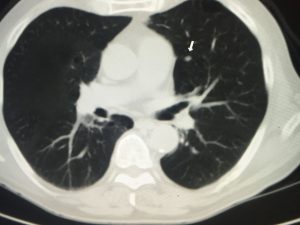
A CAT scan contains hundreds of highly detailed pictures that can detect smaller tumors in any part of the chest.
There are many reasons that lung cancer may not be detected by a routine chest x-ray. About 45% of chest x-rays are interpreted by non-radiologists (physicians who have not had specialized training in chest x-ray interpretation). Another reason is location of the tumor as there are structures in the chest that can obscure small tumors. For instance, the tumor may be located behind the heart or the pulmonary arteries and go undetected until it grows into a large, lethal cancer. On the other hand, a CAT scan contains hundreds of highly detailed pictures of the lungs that can detect smaller tumors in any part of the chest. There is no area in the chest that a tumor can hide in a quality CAT scan.
The rise in obesity also presents a challenge for physicians trying to diagnose tumors using standard chest x-rays. In a large patient, lung detail can be severely compromised. The CAT scan does not usually suffer these limitations.
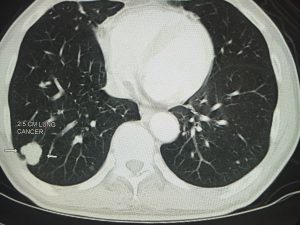
According to May, there is no area in the chest that a tumor can hide in a quality CAT scan (2.5 cm tumor detected here).
The chest CAT scan also offers other advantages over the regular chest x-ray. For instance, we are able to detect potentially obstructing plaque in the coronary arteries with a CAT scan. The CAT scan images the upper abdomen and can occasionally detect a tumor in the upper part of the liver, kidneys, pancreas, adrenal glands, and spleen. The chest CAT scan can detect tumors in the thyroid gland in the lower neck region and is excellent for imaging small lymph nodes in the chest that the chest x-ray is unable to evaluate.
In conclusion, if a cough does not resolve after appropriate therapy, a CAT scan of the chest may be a valuable imaging option. Cancers not visual on a routine chest x-ray can be detected by a quick 10-second CAT scan of the chest. Lung cancer is the number one cancer killer and early detection is key to a cure.
Dr. May is a board certified diagnostic radiologist with Desert Medical Imaging and can be reached at (760) 776.8989 or www.DesertMedicalImaging.com. He is also a member of Desert Doctors. For more information visit DesertDoctors.org or call
(760) 232.4646.









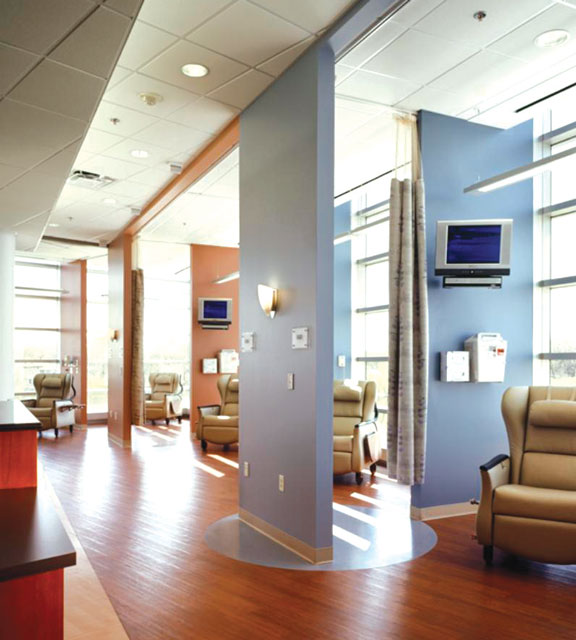

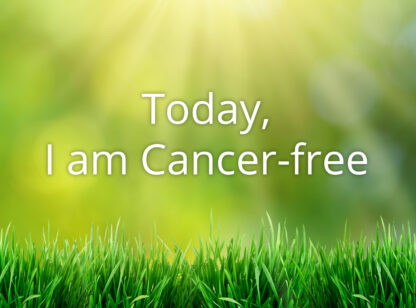



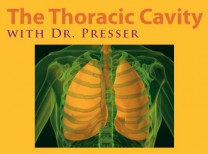


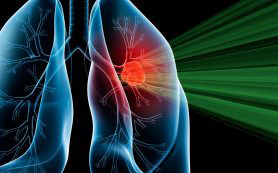




























Comments (0)